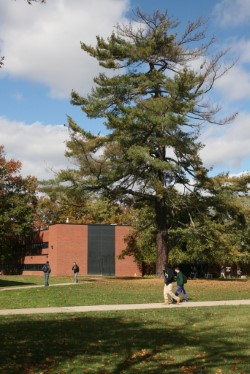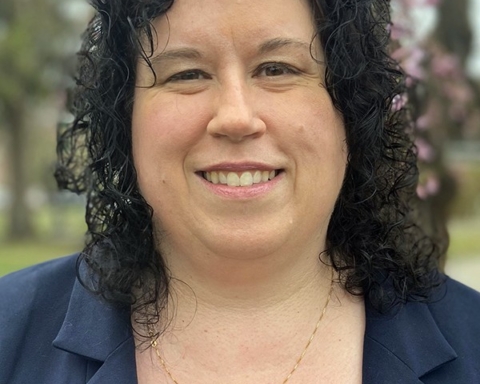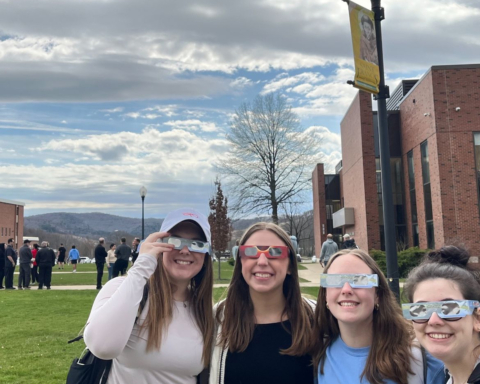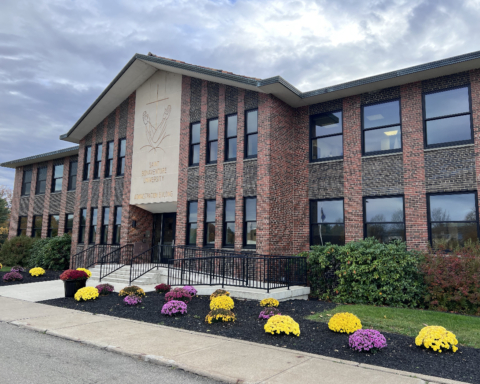By Julia Mericle
Managing Editor
The rings of the white pine tree in front of Murphy Professional Building identified the tree to be about as old as St. Bonaventure University when crews chopped it down last week, according to Phil Winger, associate vice president for facilities.
After ten years of trying to save the old tree, Winger said the university recognized it as a hazard after three big branches dropped to the sidewalk below.
“We have had foresters and arborists come and they all say the same thing,” Winger said. “That it is the end of the natural life for that tree.”
Mark Fries Tree Service of Allegany oversaw the removal of the tree, while Potter Lumber Co. removed it and is sawing the logs.
Winger said the university plans to salvage lumber from the beautiful, iconic tree, which came down on Tuesday, June 14, to use elsewhere on campus.
The timing worked well, according to Winger, who said architects came up with the idea to use the lumber from the tree for specially manufactured doors in the great room of the new ministry center, which is currently under construction.
Some of the lumber will be saved for purposes yet to be determined, he said.
The white pine tree held memories for many, including Denny Wilkins, Ph.D., professor of journalism and mass communication, who remembered seeing the tree when he first arrived for a job interview in 1996 for the professorship he now holds.
“It seemed majestic then, a guardian of that little plot of land at the east entrance to Murphy,” Wilkins said.
Wilkins said over the years he watched teachers hold classes or students gather to talk in the shade of the white pine. He held office hours on a nearby bench on occasion.
“Although I shouldn’t ascribe human qualities to a tree, I think of that pine as a witness to Bonaventure’s history,” Wilkins said.
Winger said the university plans to continue planting new trees every Arbor Day.
“We will be planting additional trees,” Winger said. “But we won’t have another tree like that any time soon.”
The planting of a tree in the exact same location depends on whether the university plans to use the land to place a new building, according to Winger. He said it would not make sense to plant a tree somewhere where it might just be chopped down again while it is still young.
To preserve some part of the prominent tree, which had no disease or fungus, the university plans to save some of the round disks taken from its trunk, possibly for display, Winger said.
While the most prominent tree being taken down, the white pine is not the only tree coming down on campus. Crews continued logging in sections of Bob’s Woods near the Garden Apartments and Francis Hall and 10 acres of land by the university’s golf course this summer. Winger clarified that no logging will occur in the grove by Doyle Hall, but back in the woods.
The project, which Winger said will remove a very selective cut of trees, will produce about $100,000 of income for the university.
Winger said within five years no one will be able to tell what happened, a fact he said he learned from logging in the same manner 10 years ago in the space across the creek from Francis Hall.
“What we have seen the foresters do is mark out the trees that are sort of at the end of their life so that their value will not grow and the removal of those trees will bring more light and improve the aesthetic of the forest after that,” Winger said.
He described the logging as an investment in lumber being done with a light hand.
mericlje13@bonaventure.edu
(Photos courtesy Dennis Frank, university archivist; and Dr. Denny Wilkins)









